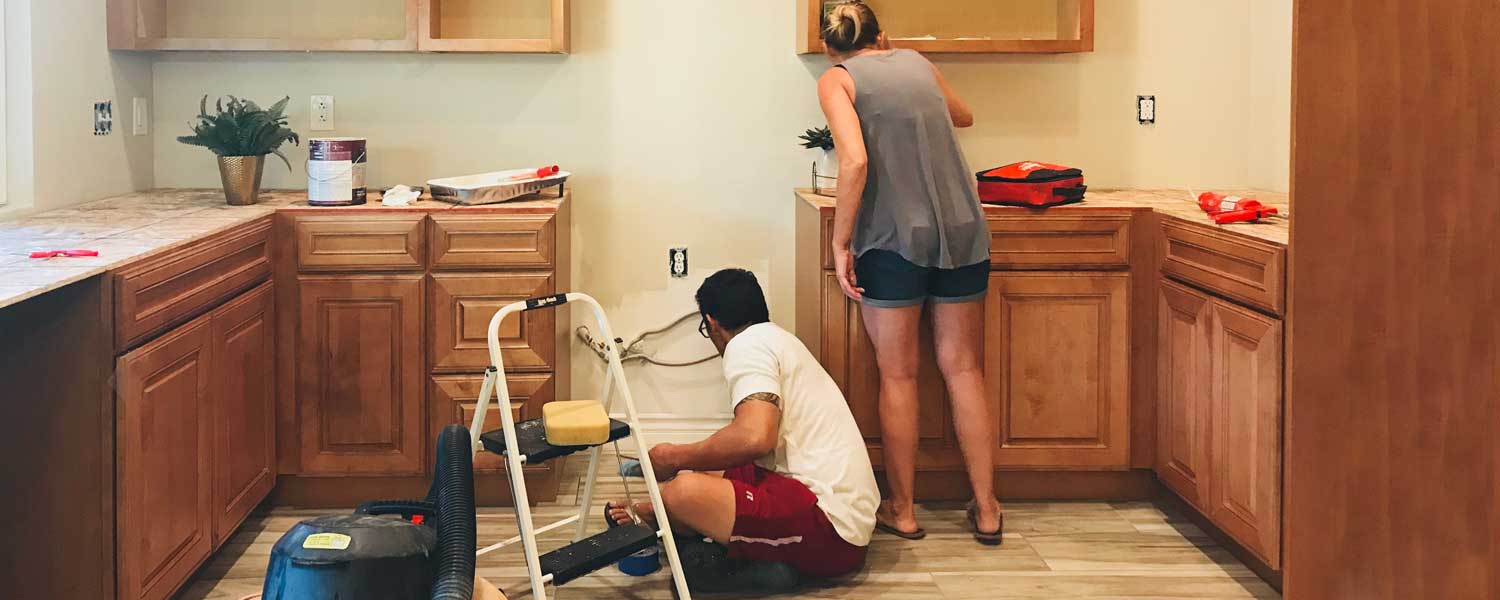
Leveraging Your Home’s Equity Can Open Possibilities
Tips You Need to Know about HELOCs
A Home Equity Line of Credit (HELOC), allows you, as a homeowner, to leverage the value of your home to borrow money for things like home improvement projects, college expenses, or even to pay off your existing mortgage. Once you obtain a HELOC, you can access the money when you need it, which can be useful to have because it can provide access to extra cash in case something unexpected happens. You pay interest only on the amount you borrow.
Home equity is the difference between what your home is worth and how much you still owe on your home loan.
With interest rates at historic lows, homebuyers are getting a bargain. Both mortgages and HELOCs are in demand. CAP COM, for example, offers a fixed-rate HELOC with no closing costs – meaning no appraisal fee, no state mortgage tax, and no filing fee (extras that can add hundreds if not thousands of dollars).1
Theresa Corlew, Manager of Home Equity, has been advocating for CAP COM members for more than 20 years. She said she’s never seen as many applications as she has in 2020.
What follows is a question-answer session with Theresa.
Q: Who’s obtaining a HELOC and why? Is the pandemic creating demand for HELOCs?
A: A lot of people are home, looking at their properties, so home improvements are big. But that’s been pretty consistent, even before COVID.
We’re also seeing a lot of debt consolidation and refinancing of mortgages. A lower rate can reduce monthly payments and what you pay over the life of the loan. And college tuition – we usually see that in the spring and fall when bills are due. Covering some or all college costs with a HELOC is an option. And with so much uncertainty surrounding the pandemic, a lot of people are setting up an extra line of credit just in case they need it.
Q: You mentioned refinancing mortgages. Do you mean someone can pay off a mortgage with a Home Equity Line of Credit?
A: Oh yes, and it’s a popular solution. You can pay off your mortgage, no matter what financial institution holds your current mortgage.
Rates on mortgages might be lower, but they come with closing costs. We have a lot of members whose only lien on their property is a HELOC. A lien is a loan secured by your property.
Of course, to obtain a CAP COM HELOC, you must be a CAP COM member, and sometimes that’s the first step.
Q: How does a CAP COM member know if a HELOC is the right way to “refinance” a mortgage?
A: The best answer is for a member to call us, and we will talk through the individual situation and help find a solution. It’s all about what’s in the best interest of the member. We like to involve our mortgage division. Some people will be better off with a mortgage. Others might be better off with a HELOC. We work together and look at the individual situations. If you’re a CAP COM member, let’s talk it through together.
Q: What’s the difference between a “term” and a “draw period”?
A: The “term” is the period the borrower has to pay back the amount they use from the line of credit. That’s usually anywhere from 5 to 20 years. The draw period is the window of time within that term that’s open for you to use money from your line of credit. That’s usually 4 to 10 years.
Q: How busy have you been with HELOC applications?
A: We’re busier now than we’ve ever been. Many people are into home improvement projects now, and people are still buying houses. Mortgages for purchases are popular, too. And because some lenders have stopped offering HELOCs, we are filling a need.
Q: What sort of paperwork is typically required?
A: You’ll have to provide your most recent paycheck stub and proof of homeowner’s insurance. We have people who want to take advantage of our HELOC offers, who aren’t members of CAP COM yet. Joining CAP COM is the first step, but that’s quick. Beyond that, there is some other paperwork that’s specific to each application, but not much more.
Q: What’s the process like?
A: A member’s application starts with an originator. Here, the person you’ll be working closely with is usually a branch representative or a Member Relationship Officer. You can apply online, at a branch, or by phone with our contact center.
After your application is submitted, you can expect a credit check to be run. Our team at CAP COM takes it from beginning to end, from application to close. The underwriter works behind the scenes to review the application and approve or deny the loan request.
We work with outside partners who specialize in things like title search and appraisals. We review those.
You’ll need to sign some documents online. Then we schedule your closing date. We send some of the closing documents electronically for signatures, and the remaining docs are signed in person at the closing. You come in only one time – at the closing. Most members come in our building to sign the forms, but we are still accommodating if members request that we go out to their car.
And the final step is to fund the credit line.
Q: That’s a lot of steps. What’s the timeframe like? How far in advance should people prepare?
A: Under normal conditions, we were going through that process in about three weeks. But so much has changed recently.
Because of COVID-19, county clerk’s offices were closed, and now many have abbreviated schedules. Appraisers weren’t going into people’s homes for a while. Vendors were either closed or backed up. Thanks to such low rates and a record number of applications, the process just takes a little longer – about six weeks now.
We want to give every application the attention it deserves and find the right financial solution for every member. We communicate with members at each step, so they know what to expect and how long it might take.
With some members who want a HELOC but need the money sooner, we’ve offered the idea of a personal loan, because the turnaround time on those is quick. Then, the member can pay off the personal loan in a matter of weeks after the HELOC closes.
Q: Are there any fees or “fine print” things to watch for?
A: The terms and fine print can vary widely from lender to lender, so be extra careful and ask questions. At CAP COM, there is a $5,000 minimum initial draw, and you have to keep the credit line open for at least three years to avoid paying back the closing costs, which are also known as recapture fees.1 There is no prepayment penalty. You can pay the line down to zero, and owe no more, but you must keep the line open for three years.
If you were to sell your house, for example, within that first three years, you’d have to close the HELOC early. That would require you to pay the closing costs at that time. Otherwise, there are no fees.











